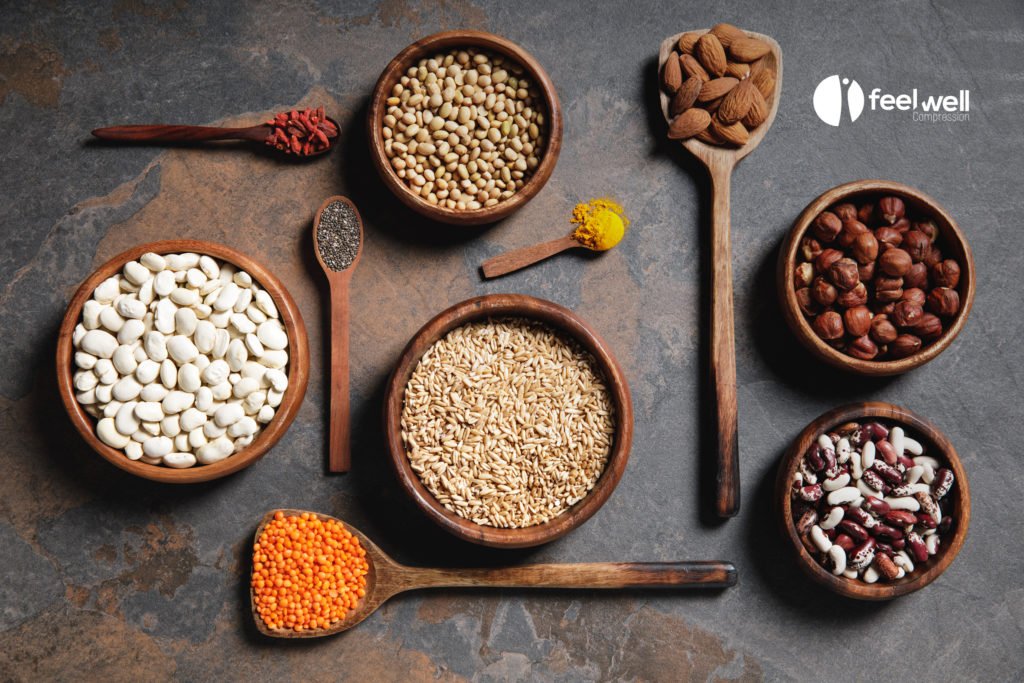The Dietary Guidelines for Americans make recommendations for the diet patterns of healthy Americans. They currently recommend adults consume at least half their grains as whole grains. This equates to 3 to 5 servings of whole grains per day.
When someone thinks about grains the first thing that comes to mind are carbohydrates. This macronutrient can get a bad rap, especially from people wanting to eat “healthy” or lose weight. This can be misleading and cause someone to not take in as many carbohydrates as needed for optimal function. It is actually recommended that a person take in 45 to 65 percent of their calories each day from carbohydrate sources. That equates to over half of a person’s calories coming from carbohydrates alone. If carbohydrates were “bad” this would be a concerning fact. Luckily, not all carbohydrates are “bad” quite the opposite actually. There are many excellent sources of carbohydrates and whole grains are primary. To understand this it is important to know the difference between refined and whole grains.
Anyone that has been to the grocery store and read the front of just about any box or bread or watched a cereal commercial within the last few years has probably heard the term “whole grain” being thrown around. A whole grain consists of three parts: the bran, the endosperm, and the germ.
- Bran: The outer shell which contains fiber, B vitamins, and trace minerals.
- Germ: The small part of the grain that contains antioxidants, vitamin E, B vitamins, minerals, healthy fats, and protein.
- Endosperm: The largest portion of the grain that primarily contains carbohydrate.
Whole grains contain all parts of the grain making them full of not just carbohydrates but also vitamins and minerals. Refined grains and flours only contain the endosperm making them full of carbohydrates alone. During the refining process the bran and the germ have been removed leaving only the carbohydrates. This process is necessary to increase the shelf life and stability of the product. Refining grains results in the removal of a quarter of the protein and two thirds or more of the nutrients. Enrichment refers to the process where three of the major B vitamins that were removed during refining are added back in to the refined product; thiamin, niacin, riboflavin.
Whole Grains
There are many types of whole grains. The most well-known and popular whole grains include: Amaranth, Barley, Brown Rice, Buckwheat, Flaxseed, Bulgur (Cracked Wheat), Kamut® Grain, Millet, Oats, Oatmeal, Rolled Oats, Popcorn, Quinoa, Rye, Spelt, Sorghum, Whole Wheat.
Refined Grains
About 95 percent of the grains consumed in the normal American diet come from refined sources.
Multi-Grain / Whole Grain
The terms multi-grain and whole grain can be confusing but should not be confused for one another. Multi-grain does not always mean whole grain. Multi-grain refers to food products where multiple types of grains This is why it is important to check the nutrition label and check for the terms enriched or refined. These are not terms that will be present on a whole grain product.
Does it Matter?
Does it really matter whether or not a person chooses whole grains over refined? When the two main sources of nutrients are removed the grain is left with only the carbohydrate dense food item. Refined grains will increase risk for many illnesses like heart disease, diabetes, and obesity. These foods are quickly digested which leads to a spike in blood sugar. Removing the fiber, health fats, and vitamins creates a food product that is primarily full of empty calories. Refining carbohydrates may lead to over eating as a result of a decrease in fiber and quick digestibility. The feeling of being full does not las long from refined foods. Refined carbohydrates can also lead to inflammation in the body and chronic inflammation can cause many health issues.
Resources
https://wholegrainscouncil.org/whole-grains-101/whats-whole-grain-refined-grain
https://www.100daysofrealfood.com/understanding-grains/
https://eatingrules.com/anatomy-of-a-whole-grain/
https://www.rodalesorganiclife.com/food/the-11-healthiest-whole-grains-you-should-be-eating/slide/1
Trista K. Best MPH, RD, LDN


